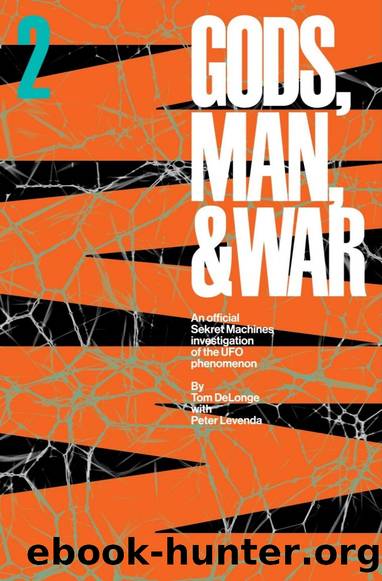Sekret Machines: Gods, Man, and War by Tom DeLonge

Author:Tom DeLonge [DeLonge, Tom]
Language: eng
Format: epub
Amazon: B07WJLQ4HS
Publisher: To The Stars
Published: 2019-10-29T07:00:00+00:00
* * *
â¼ â¼ â¼
Many scientists rejectâor openly ridiculeâthe notion of âquantum consciousness.â They believe that the âspookyâ nature of quantum physics (including especially non-locality, superposition, and the like) is sufficiently misunderstood by the layperson to be associated with other âspookyâ phenomena, such as mental telepathy, ghosts, and UFOs. Laypersons who wish to use quantum effects to explain ESP or remote viewing or other paranormal phenomena are considered ignorant, gullible, or just, well, irritating.
It is true that many enthusiasts of the idea of quantum consciousness do not have the training in classical physicsâmuch less quantum physicsâto be able to explain and defend their position on the paranormal. There is, however, a level of arrogance in the abrupt dismissal of their claims by scientists that only creates more conflict and increases the level of misunderstanding and ignorance.
Critics of quantum consciousness theories will point to some obvious examples as containing misunderstandings of how physics actually works and how physicists measure, study, and test quantum effects. There is tremendous resistance on the part of physicists where extrapolating from individual test resultsâsuch as in the famous âdouble slitâ experimentâto imagining their implications for real-world applications is concerned. Their argument runs that quantum effects occur only at the sub-atomic, quantum level (the Planck scale) and while the laws of quantum physics seem weird and spooky they are not applicable on the macro level, where classical physics applies. In other words, once we are dealing with atoms and molecules, the quantum effects are no longer observed. At the macro level we deal with the kind of classical physics with which we are accustomed in the everyday world: a world where travel or communication faster than the speed of light is impossible, where an object cannot be in more than one place at the same time, and where the cat in the box with the plutonium is always dead.
This was especially true of the insistence by some scientists that quantum effects occur in the human brain and might be responsible for consciousness. âNonsense,â was the usual response. âThe brain is warm and wet and noisy; quantum effects can only occur in extremely cold and dry conditions.â When Sir Roger Penrose and Stuart Hameroff proposed their âOrch ORâ theory of quantum consciousness in the late 1990s, they were shot down because of the assumption that quantum mechanics requires cold and dry conditions.
And that was pretty much the state of affairs until 2014. At that time, new research began appearing in peer-reviewed journals that reported quantum effects in photosynthesis as well as in the brains of migratory birds. Penrose and Hameroff felt vindicated, and began defending their discoveries with greater enthusiasm.
We wonât go into all the proofs and arguments for the various theoriesâfor which we assume the reader will be gratefulâbut we will look at why quantum physics provides what may be the best approach toward a theory of consciousness, both from the purely philosophical point of view and that of physics itself. Itâs possible that âquantum consciousnessâ may satisfy the requirements of both the mystic and the rationalist.
Download
This site does not store any files on its server. We only index and link to content provided by other sites. Please contact the content providers to delete copyright contents if any and email us, we'll remove relevant links or contents immediately.
Animal Frequency by Melissa Alvarez(4161)
Sigil Witchery by Laura Tempest Zakroff(4034)
Real Magic by Dean Radin PhD(3929)
Fingerprints of the Gods by Graham Hancock(3744)
Journeys Out of the Body by Robert Monroe(3467)
Aleister Crowley: The Biography by Tobias Churton(3433)
The Rosicrucians by Christopher McIntosh(3375)
Alchemy and Alchemists by C. J. S. Thompson(3300)
Mysteries by Colin Wilson(3256)
Hitler's Monsters by Eric Kurlander(3171)
The Hatha Yoga Pradipika (Translated) by Svatmarama(3081)
John Dee and the Empire of Angels by Jason Louv(3048)
Wicca: a guide for the solitary practitioner by Scott Cunningham(3046)
Infinite Energy Technologies by Finley Eversole(2835)
Dark Star Rising by Gary Lachman(2743)
The Book of Lies by Aleister Crowley(2728)
Book of Life by Deborah Harkness(2726)
Aliens by Jim Al-Khalili(2706)
To Light a Sacred Flame by Silver RavenWolf(2681)
